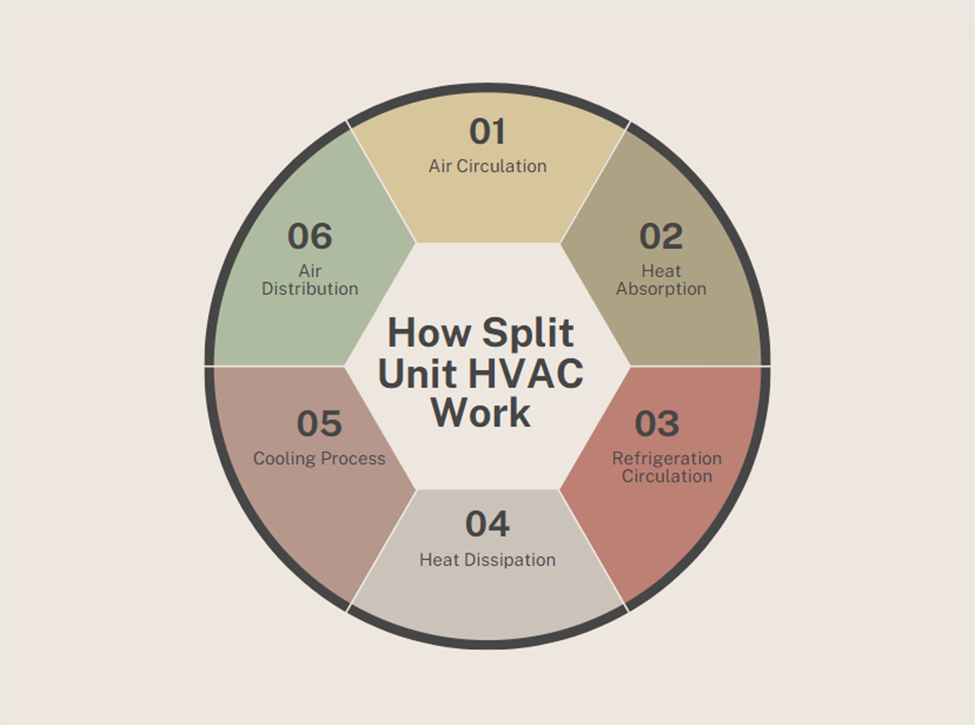Everything You Need to Know About Split System Air Conditioner
- Sofia Fadzil
- May 4, 2024
- 3 min read
Updated: Aug 14, 2025

Split unit HVAC systems, also known as split air conditioners, are a popular choice for residential and commercial cooling and heating needs.
Consisting of indoor and outdoor units, these systems offer flexibility, energy efficiency, and noise-free operation.
In this article, it will guide you with everything you need to know about split unit HVAC systems.
Components of a Split Unit HVAC System:
Indoor Unit
The indoor unit contains the evaporator coil, blower fan, and air filter. It is typically installed indoors and is responsible for cooling or heating the air before circulating it throughout the space.
Outdoor Unit
Positioned outside the building, the outdoor unit houses the compressor, condenser coil, and fan. It dissipates the heat absorbed from the indoor air, allowing the refrigerant to cool down and circulate back into the indoor unit.

How does a Split Unit HVAC System Work?
A split system air conditioner works by using refrigerant to absorb heat from indoor air and release it outdoors, resulting in cooler air circulated indoors.
Here's a how split system works:
Air Circulation
The process begins with the indoor unit, which contains a fan.
This fan pulls warm indoor air from the room and blows it over the evaporator coil.
Heat Absorption
The evaporator coil contains refrigerant, a chemical with properties that allow it to change states between liquid and gas at low temperatures. As the warm indoor air passes over the cold evaporator coil, the refrigerant absorbs heat from the air, cooling it down.
Refrigerant Circulation
The now warmed refrigerant vaporizes into a gas as it absorbs heat from the indoor air. It then travels through a copper tubing to the outdoor unit.
Heat Dissipation
In the outdoor unit, the compressor pressurizes the refrigerant gas, raising its temperature. The hot refrigerant gas then passes through the condenser coil, where it releases the absorbed heat into the outdoor air.
Cooling Process
As the refrigerant releases heat outdoors, it condenses back into a liquid state. It then flows back indoors through the refrigerant lines, ready to absorb more heat from the indoor air.
Air Distribution
The now cooled indoor air is blown back into the room by the indoor unit's fan, creating a comfortable indoor temperature.
This continuous cycle of absorbing heat indoors, transferring it outdoors, and circulating cooled air indoors repeats as needed to maintain the desired temperature.
This is a process used by a split system for cooling. For the heating process, a split system with a heat pump can reverse the flow of refrigerant, allowing it to absorb heat from outdoor air (even in cold weather) and release it indoors, providing warmth.
This feature makes split systems versatile for both cooling and heating needs.
Pros and Cons of Split HVAC Unit
Pros | Cons |
Efficient cooling and heating | Installation cost can be high |
Quieter operation compared to window units | Requires regular maintenance and servicing |
Better air quality due to separate indoor and outdoor units | Outdoor unit can be vulnerable to weather condition |
More visually pleasing, with indoor unit typically mounted high on wall or ceiling | Requires adequate space for outdoor unit installation |
Can increase property value | May require additional equipment for multiple zones |
In a nutshell, split unit HVAC systems offer efficient, quiet, and customizable cooling and heating solutions for any spaces required. With their design, energy efficiency, and flexibility, they have become a popular choice for many users.
TCW Group, as a one stop HVAC manufacturer based in Malaysia, able to provide services starting from design of the units based on customized applications, up to manufacturing and complete unit assembly.
Shall you have any inquiries, feel free to reach us at support.hvac@tcw-my.com.




Comments